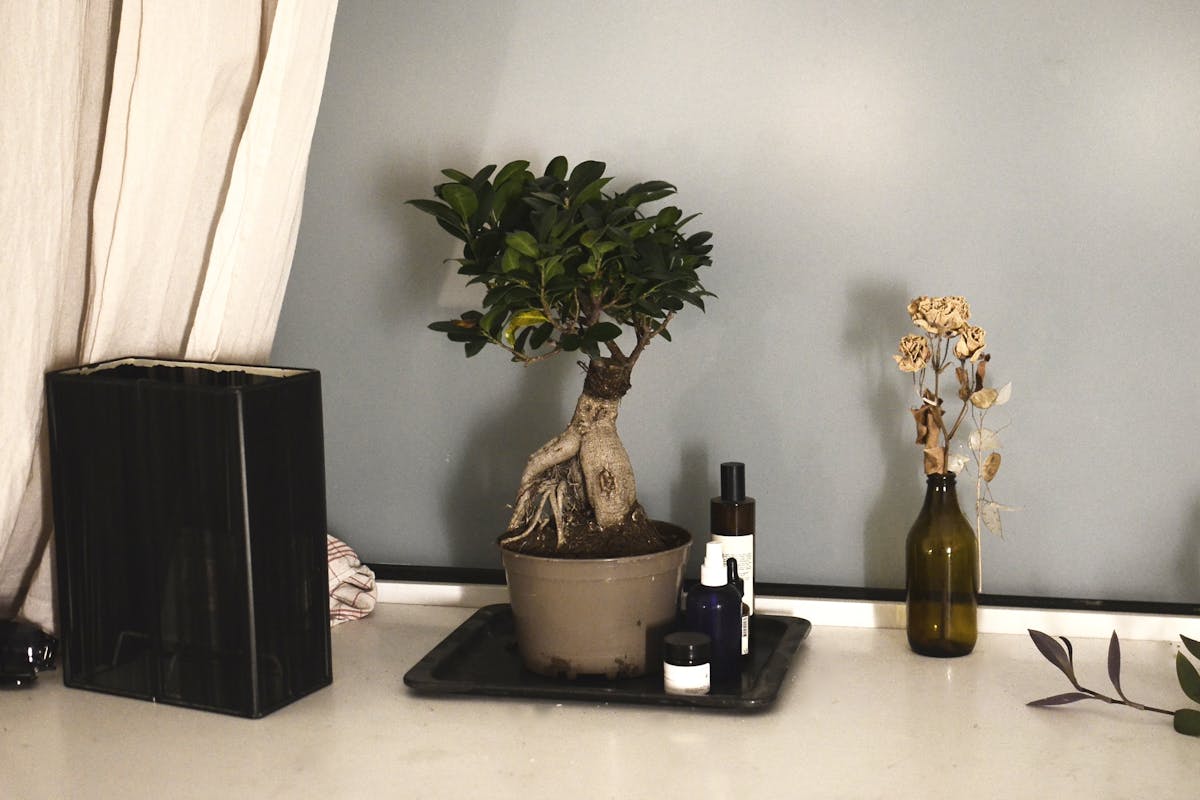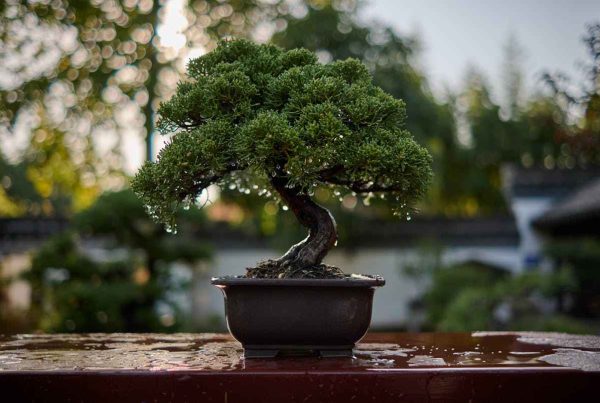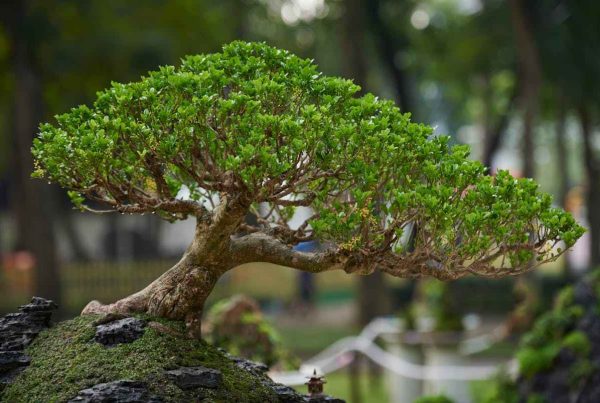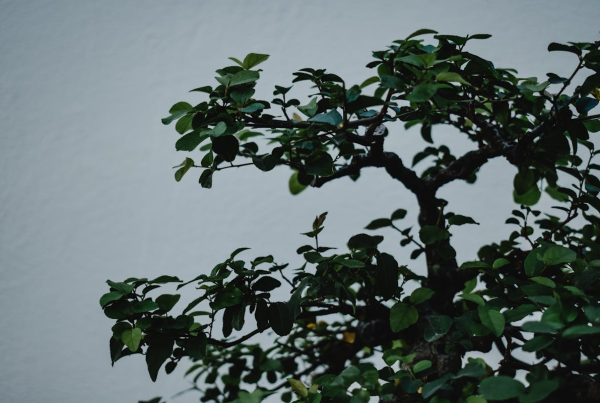Herons has a wide range of Ficus bonsai trees to choose from. Ficus is the most adaptable indoor bonsai, thriving in moderately heated spaces.
They must have a least temperature of 10°C or 50°F in winter to stay healthy. They are vigorous growers and can tolerate very little light when grown indoors. Some varieties lose all their leaves in winter, but don’t worry; they grow new leaves in the summer. Ficus is definitely our favorite bonsai.
Inspect solution edges frequently to maintain wood density and control hair length.
The Ficus genus is in the Moraceae family. It is a popular houseplant for Bonsai beginners. They can be found everywhere in tropical regions and are very suitable for indoor bonsai.
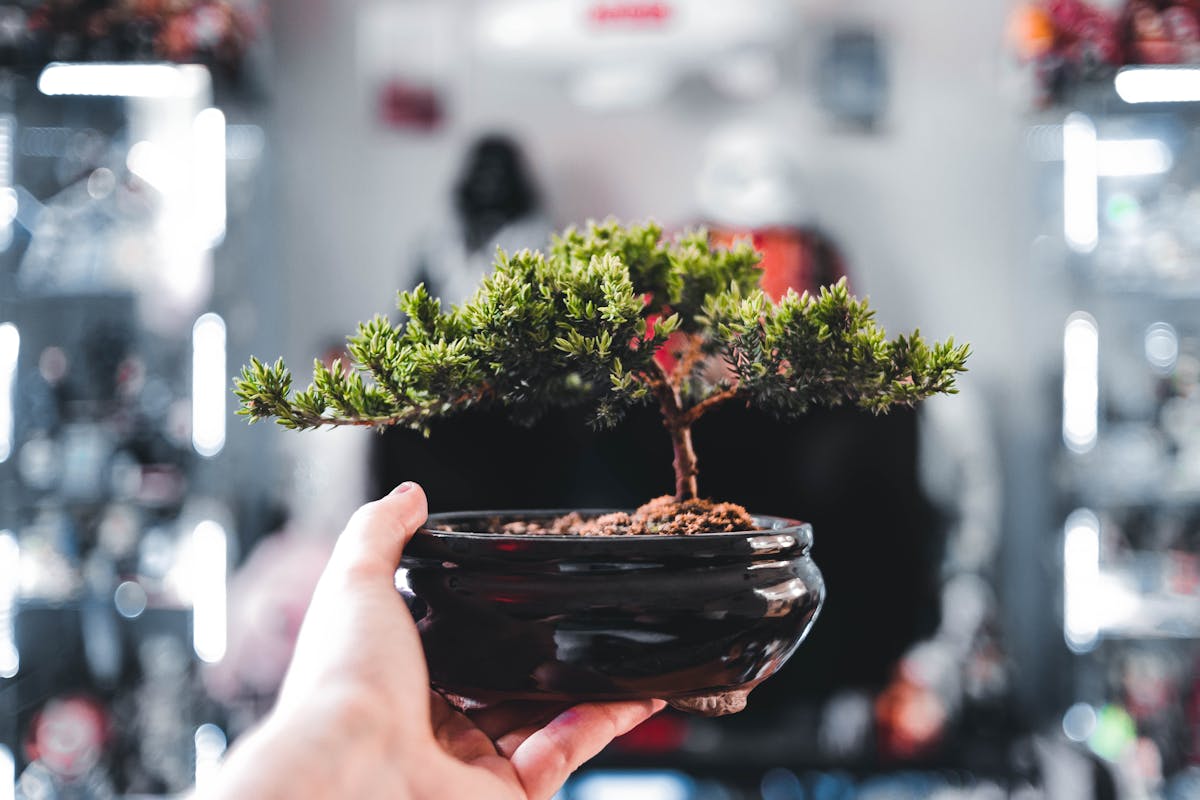
Ficus Bonsai tree
Ficus Bonsai Care Instructions
Installation
Ficus is a hardy indoor tree. It can be kept outside in summer when the temperature rises above 15°C. It needs lots of light, preferably full sun. So, don’t put it in a shady spot. The temperature should always be moderate. Figs can handle low humidity due to their waxy leaves. But, they like and need high humidity for their aerial roots to develop.
Watering
Ignore the labels that say your ficus needs daily water; you should water it carefully. Ficus needs to be watered regularly when the soil is slightly dry. Bonsai Ficus likes room temperature and light water. It can tolerate occasional high or low water levels. We recommend misting every day to keep moisture. But, too much misting can cause mold. The warmer it gets in winter, the more water figs need. It should be watered only slightly more or even less if stored in a cool place. Read on to learn more about watering bonsai trees.
Fertilizer
Fertilize every two weeks in summer and every four weeks in winter, unless growth is stopped. In addition to liquid compost, compost pellets can also be used.
Pruning
Regular pruning is necessary to maintain the shape of the tree. Remove two leaves after six to eight leaves have developed. Some Ficus Bonsai species naturally grow large leaves. So, you can use defoliation to make the leaves smaller. Ficus can be left out for a year or two if a larger crown is desired. The severe pruning required afterwards will not harm the Ficus. New shoots will grow from the old trees. Large wounds should be closed with pruning. Read more about pruning bonsai trees.
Thin ficus branches are easy to prune and bend since they are flexible. However, you should check the wires frequently. They can quickly damage the bark. Strong branches should be made from young wire because they can remain on the tree for a long time.
Repotting
Report Ficus with bonsai soil mix every year in the summer. Ficus tolerates root cutting well. Read on for bonsai tree reviews.
Propagation and Design.
You can plant cuttings at any time of the year, but they are most successful during the mid-growing season. During the summer months, from April to May, the weather is perfect. In most cases, spring is the best time to sow Ficus seeds.
Ficus tree branches, roots, or trunks can be brought together and tied by pressure. This is called pattern design. It creates interesting structures. You can tie several small plants together to create a strong tree. You can also easily plant fig tree branches and roots. If the growing conditions are good, you can take aerial roots from one part of the tree and tie them to another point. Small plants, stems, or aerial roots can be grafted for rapid healing or closure of large wounds. An experienced gardener can work on fig trees with much freedom. This freedom boosts Ficus retusa’s growth, making it thrive as a Bonsai.
Buy Ficus
Buy Ficus ginseng bonsai. Ficus plants are cheap or potted plants. You can get them at almost any hardware store or nursery. Cheap bonsai often come with many issues. This includes severe scarring from rusty ropes in the trunk. The tree is in bad shape. It has branches in strange places and poor soil. It’s in a pot without a water hole. When you buy from a Bonsai specialist, you will find well-cared-for Bonsai. They are usually high quality. They offer young plants, pre-bonsai, and pre-registered Ficus trees. They also have high-quality bonsai trees.
Diseases and Pests
Figs resist pests well. However, they still face many problems. This is especially true in winter, depending on their location and the time of year. Dry air and lack of light slow down Bonsai Ficus and often cause leaf loss. Such severe cases are sometimes caused by a scale insect or spider. Adding pesticides to the soil or using an insecticide will kill the pests. However, the Ficus tree is sick and needs help. Plants need light for 12 to 14 hours a day. They also need regular leaf spraying. See Bonsai Tree Care for more details on this technique.
General information about the Ficus bonsai tree.
The exact number of Ficus trees varies by location. Different sources have different counts. We know that there may be between 800 and 2000 different species. The most famous of the bonsai is Ficus Retusa. It usually has an S-shaped stem and dark green leaves. Similar Ficus species include Microcarpa, Tiger Bark, and Willow Leaf. Also, Golden Gate, Religiosa, Benjamina, and Taiwan. Ficus Ginseng is another popular tree with a wide trunk. stems, like the Ginseng root. In some cases, it is mixed with Ficus microcarpa leaves. This happens with Ficus microcarpa ginseng. If you need help identifying your tree, see our Bonsai Tree Identification Guide.
Some fig trees can grow very large and have a crown circumference of more than 300 meters. All Bonsai fig varieties share a milky latex that comes from wounds or cuts. The tropical figs are evergreen trees, small shrubs, or even climbing plants. Some of them can make nice flowers. But, most Ficus species have hidden flowers in small receptacles. The fruits grow from the flowers. Only specialized pollinating fig wasps can pollinate those hidden flowers. The fruit can be yellow, green, red, or purple-blue. They are a few millimeters to several centimeters and are the edible fruit of Ficus carica.
Most Ficus Bonsai trees can make aerial roots in their natural habitat. They are also called “banyan tree”. In Bonsai, these roots are often used in appealing creations. They have many aerial root pillars or are used in root-over-rock styles. This article presents the development of different fig species. It includes aerial roots: Ficus species. To grow aerial roots in our homes, 100% height must be achieved artificially. For this, you can use a glass lid, an aquarium, or a building made of sheets of paper. Aerial roots grow down from the branches. They grow into strong pillars when they reach the ground. In tropical regions, a single tree can become a forest and cover a very large area.
Many Bonsai Ficus species have special points on their leaves that drain rainwater. The sizes of the leaves can vary between 2 and 50 cm. Fig trees exhibit smooth bark with a brown hue on their trunks. However, a few species or varieties have specialized bark, such as Ficus microcarpa. For more Ficus photos, check out this article: The 10 Best Ficus Bonsai Trees. If you have pets, be sure to keep your Ficus out of their reach.
